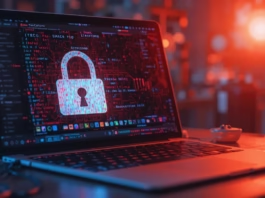Understanding Email Spoofing
Email spoofing is a malicious practice where cybercriminals forge the sender’s address on an email to make it appear as if it originates from a trusted source. This deception often leads recipients to believe that the message is legitimate, thereby increasing the risk of falling for phishing scams or other malicious activities. Spoofed emails can impersonate organizations, businesses, or even individuals, making them a significant threat in today’s digital communication landscape.
Cybercriminals employ various methods to create fake email addresses that closely resemble legitimate ones. One common technique is to manipulate the “From” field in the email header, which can easily be done using readily available software tools. Additionally, hackers may utilize open mail relays or configure their domains to send emails on behalf of the targeted organization. The end goal is often to extract sensitive information, initiate unauthorized transactions, or distribute malware.
Hackers often impersonate high-profile individuals, such as CEOs, because their positions command trust and authority. For instance, an employee receiving an email spoofed to appear from their CEO may be compelled to act on a fraudulent request without due diligence. These social engineering tactics leverage the psychological element of authority to bypass skepticism and security protocols.
To better understand email spoofing, it is vital to be familiar with certain terminologies. Key terms include “SPF” (Sender Policy Framework), which is a DNS record that indicates which mail servers are allowed to send emails on behalf of a domain, and “DKIM” (DomainKeys Identified Mail), which adds a digital signature to email headers for verification purposes. Together, SPF and DKIM can help mitigate the risk of email spoofing, but many organizations still remain vulnerable due to inadequate implementation of these measures.
The Process of a Cyberattack Through Spoofing
Email spoofing represents a prevalent method employed by cybercriminals, facilitating various stages of a cyberattack. Initially, hackers identify their targets, often selecting individuals within a particular organization. This selection is usually based on the target’s role and access level, with high-ranking officials such as CEOs or financial officers frequently being primary targets due to their authority and influence. Such careful selection marks the commencement of a methodical attack strategy.
Once the target is identified, social engineering becomes a key element in the manipulation of employees. Hackers often spend time researching the organization, looking into the personal details and professional relationships of the individuals within. This allows cybercriminals to craft emails that appear convincingly genuine. They may mimic a senior executive’s email address or use similar domain names, creating a facade of legitimacy. This deceit is critical as it enables the attacker to establish credibility and gain the recipient’s trust, making them more susceptible to subsequent actions.
The tactics employed during this stage are crucial. For instance, in the case of CEO fraud, attackers may send a spoofed email directing an employee to process an urgent financial transaction. In spear-phishing attacks, the spoofed emails often retrieve sensitive information or prompt the installation of malicious software. When employees fall victim to these deceitful emails, the repercussions can be severe, ranging from financial losses to reputational damage for the organization. Understanding how email spoofing facilitates such cyberattacks is essential for organizations to devise effective countermeasures, thus reinforcing the need for heightened awareness and robust security protocols against this growing cyber threat.
Risks and Impact of Domain Spoofing
Domain spoofing presents significant risks for organizations of all sizes, exposing both high-ranking officials and lower-ranking employees to various threats. Spoofing occurs when a malicious entity forges an email address to impersonate someone from a trusted domain. This tactic can create a false sense of security, leading employees to unknowingly engage with malicious content, thereby jeopardizing sensitive information.
The implications of compromised email addresses extend far beyond the immediate security concern. Financial losses are a prominent risk, as attackers often use spoofed emails to request unauthorized wire transfers or sensitive financial data. For instance, in a prominent case involving a global manufacturing firm, fraudsters posed as high-ranking executives to manipulate staff into transferring significant sums of money, culminating in substantial financial repercussions for the company.
Additionally, domain spoofing can lead to catastrophic data breaches. When cybercriminals succeed in deceiving employees into disclosing credentials or other sensitive information, the entire organization becomes vulnerable to further attacks and incurs costs relating to remediation and recovery. For example, a well-known healthcare provider faced a major backlash after an email spoofing incident led to unauthorized access to patient records. This resulted not only in financial consequences but also significant legal repercussions.
The damage to corporate reputation is another critical consideration. As companies grapple with the fallout of spoofed emails, their credibility diminishes in the eyes of partners, clients, and the public. Organizations may find themselves in an uphill battle to restore trust after such incidents, as seen in a recent situation where a retail company faced customer backlash due to leaked private information from a successful spoofing attack. This illustrates how domain spoofing, although often overlooked, bears serious consequences that can affect every level of an organization.
Preventive Measures Against Email Spoofing
Email spoofing poses a significant threat to organizations, making it essential to adopt effective preventive measures. One of the fundamental strategies involves conducting regular security awareness training for all employees. This education helps staff recognize phishing attempts and teach them best practices for handling suspicious emails. Employees should be trained to verify the authenticity of email senders, especially when emails contain requests for sensitive information or financial transactions.
Implementing email authentication protocols is another crucial step in mitigating the risk of email spoofing. Two key protocols are Sender Policy Framework (SPF) and DomainKeys Identified Mail (DKIM). SPF helps to define which mail servers are authorized to send emails on behalf of your domain, thereby enabling recipient servers to filter out unauthorized messages. DKIM enhances this process by providing a method for validating the email’s origin through digital signatures. When used in conjunction, these protocols strengthen domain security and significantly reduce the likelihood of successful email spoofing attacks.
Furthermore, maintaining an up-to-date inventory of publicly accessible email addresses is vital. Regular audits should be performed to identify email addresses that may no longer be in use or that need to be disabled. This proactive approach limits the available targets for potential hackers and reinforces the integrity of your organization’s online reputation.
The role of IT departments cannot be overstated in combating email spoofing. They should continuously monitor email traffic for unusual patterns that might indicate spoofing attempts. Additionally, implementing advanced security measures such as email filtering solutions and anti-spam software can bolster defenses against spoofed emails. By employing a combination of education, authentication, and constant monitoring, organizations can significantly enhance their resilience against email spoofing threats, ensuring a safer communication environment.



